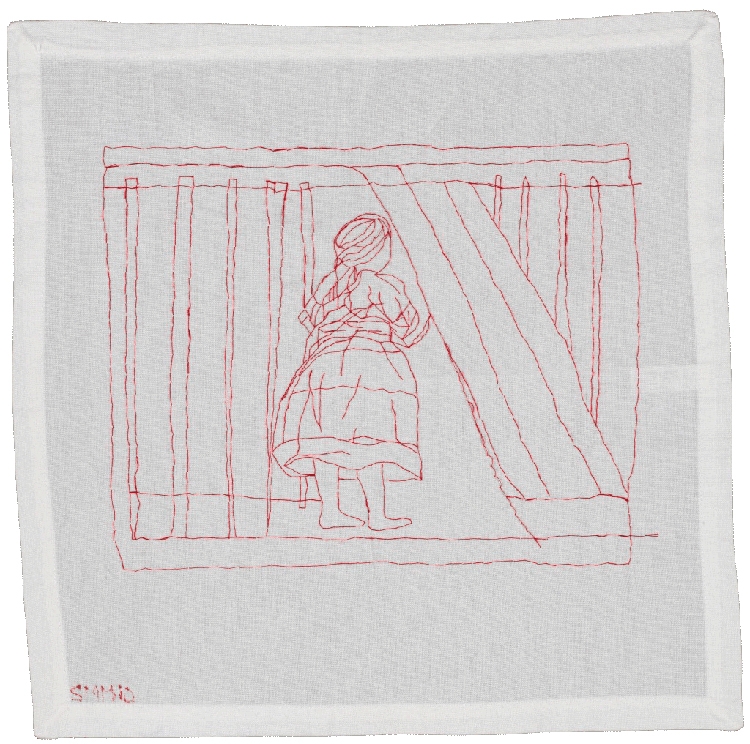I came across Senzeni Marasela’s work during one of those websurfing sessions that takes you randomly from one page to the next. I was intrigued by the intensity and depth of scope of her work. I was all the more surprised that up to then I had neither been exposed to her practice nor had I ever heard anyone talk about her.
Born in Thokoza, South Africa, Marasela studied at the University of the Witwatersrand, Johannesburg, where she obtained a BA Fine Arts degree in 1998. In 2003 she started a project titled Theodorah comes to Johannesburg, a durational performance based on her mother Theodorah’s stories about travels from the rural area of Mvenyane to Johannesburg, a journey of 11 hours. Like many young black women in the city, her mother was traumatised by events that took place in apartheid South Africa during the 1960s. Many black women returned to live in the countryside and many more were forced to undertake journeys into strangeness. Marasela wore a yellow dress that her mother gave her, taking on Theodorah as an alter ego. The artist has always felt that Theodorah’s story was representative of that of many black women in South Africa. The emblematic yellow dress has been translated into drawings, prints and thread works, always with the fi gure’s back to the audience. The story of Theodorah never left Marasela’s work and has at times been combined with that of Sarah Baartman (who was ‘exhibited’ around nineteenth-century Europe as the ‘Hottentot Venus’) and of the artist herself.
In 2013, Theodorah took another journey, for the photographic series Ijeremani Lam. Making reference to Njabulo Ndebele’s novel The Cry of Winnie Mandela (2003), Theodorah is pictured alone in Johannesburg looking for her husband, Gebane Mthetyane. All the women in Ndebele’s book are left by their husbands under various circumstances – the apartheid migration system frequently left black women alone and the black family disintegrated – and these women are forced to embark on a period of purgatory, waiting for the reunion with their families.
Marasela is interested in the multiplicity contained within the experience of waiting: in the pathologies of women who are either forced to wait or choose to wait. Ndebele’s novel, which oscillates between fi ction and documentary, clearly states this as we peruse the lives of his female characters. In the angst of their wait they begin an imaginary conversation with Winnie Mandela. The latter waited publicly for Nelson Mandela for 27 years and subjected herself to much scrutiny and the dissection of her own privacy. There is a perceptible haunting ache that runs through Ijeremani Lam that is, nevertheless, difficult to describe. What fascinates me in Marasela’s work is that it addresses and carries out, by way of reenactments, a characteristic feature of contemporary life in Africa: waiting. Perhaps a waiting such as is portrayed in Abderrahmane Sissako’s drama Waiting for Happiness (2002), in which the main character has been away from home for so long – waiting somewhere in the desert to migrate to Europe – that he doesn’t even remember his local language. Marasela adds complexity to the act of waiting and translates it into an affecting visual language charged with political and historical gravity.
Senzeni Marasela’s work – in media including embroidery, print and video as well as performance – has been widely exhibited in South Africa, Europe and the US. The Boksburg-based artist, who is inspired by literary as well as family-historical themes, is the recipient of the 2002 Thami Mnyele Scholarship, the 2002 Upstream Award and the 2008 Ampersand Foundation Fellowship. Selected by Koyo Kouoh, artistic director of RAW Material Company, Dakar.
Read all of our 2015 FutureGreats profiles
This article was first published in the March 2015 issue.
